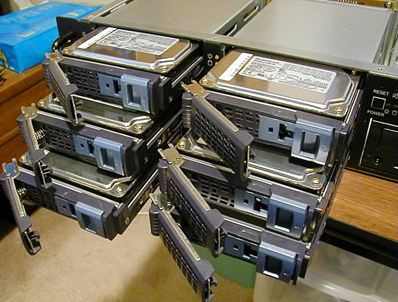How to Recover Datas from RAID after a RAID Failure
RAID (redundant array of independent disks) is a way of storing the same data in different places on multiple hard disks. By placing data on multiple disks, I/O (input/output) operations can overlap in a balanced way, improving performance. Since multiple disks increases the mean time between failures, storing data redundantly also increases fault tolerance. There are several different levels of RAID available. Each level offers various advantages in terms of data availability, cost and performance. Our best bet is to assess your needs in order to determine which level works best for you.

When a failed disk in a RAID storage system is not replaced on time, the data stored on the entire storage system is vulnerable to further damage. If you have experienced a RAID failure, do not try to re-instantiate your strip or rebuild the RAID array. Anything that is done to the RAID array from this point forward can greatly reduce our ability to recover data from the RAID.
The better option for Raid data recovery is talk to a RAID Recovery Specialist. When recovering data from RAID arrays, the first step is to analyze each drive for physical damage. If there is physical damage to any of drives in the Raid array, they fix the physical problem with the drives. After checking the physical integrity of each drive, they transfer the complete drive volumes to another Raid data recovery servers and then process the total array as image files, to ensure that all of your data is safe. Once completely transferred sector by sector information to data recovery servers, they evaluate the array images to determine if corruption has occurred, and work on repairing it.
How to Protect RAID from Failure
- Never replace a failed drive with a drive that was part of a previous RAID system; always zero out the replacement drive before using
- If a drive is making unusual mechanical noises, turn it off immediately and get assistance
- Take a backup before making hardware or software changes
- Label the drives with their position in a RAID array
- Do not run volume repair utilities on suspected bad drives
- Do not run defragmenter utilities on suspected bad drives
- In a power loss situation with a RAID array, if the file system looks suspicious, or is un-mountable, or the data is inaccessible after power is restored, do not run volume repair utilities
We value your comments. Feel free to discuss here any ideas. Share this information with your friends.
You can follow us on Twitter or join our Facebook fan page to keep yourself updated on all the latest from Microsoft, Google and Apple.